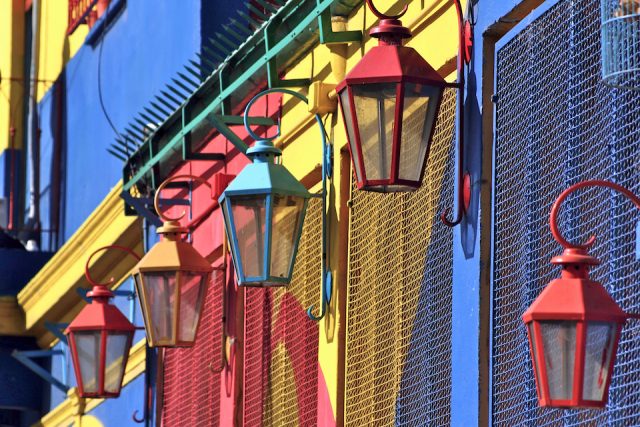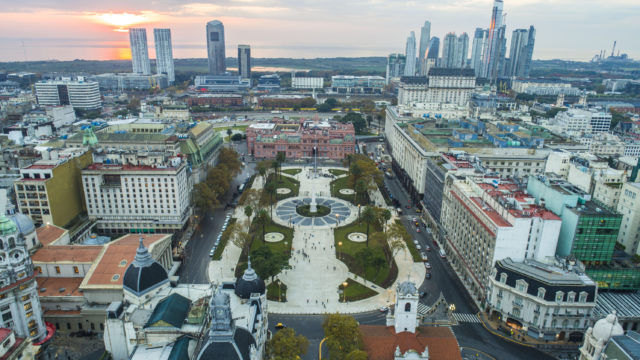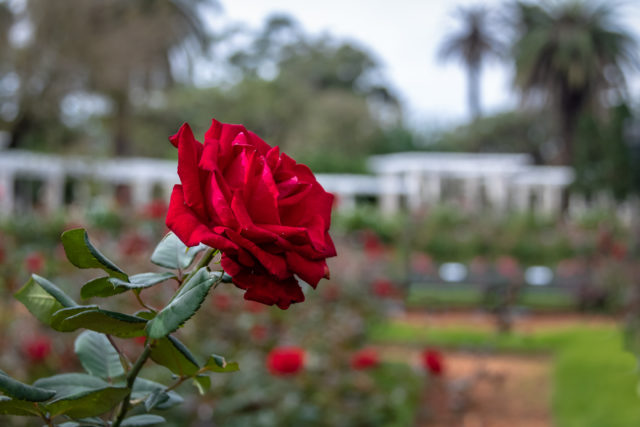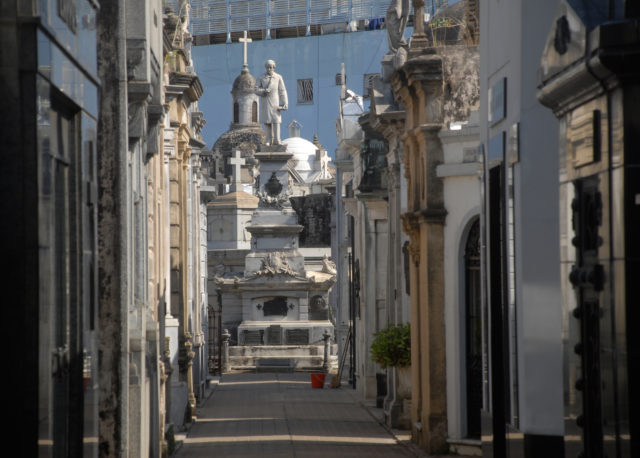Best Things to Do in Buenos Aires With Kids
ABOUT
At Our Whole Village, we plan meaningful vacations for families who want to create lifelong memories and show their kids the world in a more conscious and intentional manner.
WORK WITH US
We help families take meaningful vacations so that they can escape everyday life, show their kids the world and make lifelong memories - with care, confidence and peace of mind.
THE BEST FAMILY VACATIONS BY AGE
Your (free) guide to the top travel destinations for families with babies, teens and everyone in between.
DOWNLOAD NOW
ABOUT US
January 3, 2023
Buenos Aires is renowned for its rich culture, sophisticated vibe, and storied ties to Europe. These factors have helped the city clinch a reputation as the “Paris of South America.” Ranking the second most visited city after Mexico City, your family will enjoy convenient amenities, breathtaking landscapes, and countless kid-friendly attractions.
From vibrant neighborhoods to wide-open green spaces and engaging museums, you’ll never run out of fun things to do with family. And that’s not to mention interactive restaurants, dynamic markets, and delectable cuisine.
Here’s everything you need to know about Argentina’s capital and how to make the most of a trip to Buenos Aires with kids.
Scope Out La Boca’s Iconic Art Scene

© Marc Turcan | Dreamstime.com
Buenos Aires is organized into 48 different barrios or neighborhoods, and among the most colorful and exciting is La Boca. This is due, in large part, to the iconic street art you’ll scope out in this corner of the city.
Massive graphics fill the neighborhood providing splashy eyefuls of color, whimsical characters, and eclectic imagery. Make the most of your experience by booking one of the city’s many popular walking tours focusing on La Boca’s street art. To capture Buenos Aires in all its vibrancy, we also recommend a fun family photoshoot with a professional through flytographer. Find out more about hiring a flytographer for your Argentina family vacation.
A stroll through La Boca also provides the ideal opportunity to learn more about local artist Benito Quinquela Martin. The Argentine painter was the tour de force behind La Boca’s many colorful murals. He also donated to local causes during his lifetime, including an initiative to teach theater in area schools. At the Museo Benito Quinquela Martin, you can tour his private home and explore his personal collection of avant-garde artworks.
Discover Buenos Aires’ Athletic Side
Besides impressive street art, check out La Bombonera, the stadium that once played home to soccer great Diego Maradona. Today the stadium hosts the Boca Juniors football team, and there’s no better place to see South America’s sporty side.
After getting your fill of soccer action, visit El Caminito (the “Little Walkway”). This cobblestone street is an excellent spot for souvenir hunting and welcomes visitors with impromptu performances by buskers and tango dancers. Apart from soccer, no trip to the nation would be complete without exploring the nation’s other most popular athletic pastime: Argentine tango.
In the late 18th century, people coined the term “tango” to describe dancing and music in Buenos Aires. Today’s version reflects an admixture of customs and cultures borrowed from the nation’s diverse immigrant populations, hailing from Spain, Poland, and multiple African countries (among others). Ultimately, tango blends Spanish flamenco, Polish polka music, and African dances.
Get a History Lesson at the Plaza de Mayo

© Claudio Zuccala | Dreamstime
Main squares say a lot about their cities, a generalization that proves no less true in Buenos Aires. The Plaza de Mayo is the oldest public square in the municipality. As a result, it’s where most of the city’s vast and rich history has transpired.
In the center of the square, you’ll notice a large white obelisk called the Pirámide de Mayo. Placed at the site in 1811, it commemorates the May Revolution. This week-long series of revolutionary events tipped off the Argentine War of Independence. Today, the May Revolution is considered the conception point of modern Argentina.
As you walk the square, look for the Casa Rosada (Pink House), which still operates as the President of Argentina’s official executive office. This house is where Eva Perón delivered her iconic, mid-century speech to the nation’s people.
You’ll likely also notice white women’s shawls painted on the ground surrounding the Pirámide de Mayo. These shawls provide a visual reminder of Las Madres (the mothers) of the Plaza de Mayo, a group of female protestors who continue to lobby the government about the whereabouts of more than 30,000 people who “disappeared” from 1976 through 1983 during the so-called “Dirty War.”
Discover the San Telmo Market
Although most attractions in Buenos Aires come with some flexibility in terms of the day you choose to visit, leave a Sunday free to spend at the San Telmo Market. Located in San Telmo, one of the oldest neighborhoods in the city, the market is open from 10 am to 4 pm.
It hosts a wide variety of fascinating finds and represents a cultural phenomenon in its own right. (While the market is also open during the week, Sunday is best for people watching and the most eclectic turnout of vendors.) From antiques to crafts and fine art, there’s no better place to spend a Sunday shopping for souvenirs and mementos.
Pound the quaint cobblestone streets in search of the perfect gifts or savor the flavors of food vendor carts. There are also plenty of ice cream shops when you’re ready for a bit of indulgence. Nobody does ice cream better than Argentinians, so don’t pass up your chance to try this delectable treat, South American style. The most popular flavor in the nation is Dulce de Leche, with good reason!
Savor Buenos Aires’ Green Spaces

© Diego Grandi | Dreamstime
Buenos Aires contains many fantastic municipal parks where you can people-watch while your little ones blow off steam. They include Palermo’s Rosedal Rose Garden, boasting more than 18,000 roses! There’s also the tranquil Japanese Gardens, where harmony and balance reign, and the Botanical Gardens, showcasing classical statues and more than 6,000 species of plants and trees.
The largest of Buenos Aires’ parks is the Parque Tres de Febrero, which locals refer to as the Bosques de Palermo (Palermo Woods). Encompassing nearly 1,000 acres, the Palermo Woods contains many fun spots your family will love exploring. They include the Lago Regata, a lake where you can rent pedal boats for a leisurely water experience. There’s also a gorgeous carousel worth exploring.
Besides stunning open spaces, you’ll also find the Planetario Galileo Galilei, ranked one of the best planetariums on Earth. The five-story facility will keep your kids entertained for hours and offers a variety of shows covering everything from outer space to asteroids and stargazing. Artifacts include a 4,000-year-old meteorite and a moon rock from the Apollo XI mission.
Explore Argentine Fast Food
When it comes to Argentine food that’s fast, nothing beats empanadas. These savory and satisfying eats are inexpensive and widely available. What’s more, they come in handy little packages that are highly portable. Depending on where you stop to purchase them, empanada fillings typically come in choices ranging from ham and cheese to spinach, chicken, cheese and onion, and beef. Remember that one or two empanadas equal a snack, and three or more are meal worthy.
Although pizza may not be the first thing that comes to mind when you think of Buenos Aires, it’s time to expand your cultural perspective. The city is the self-declared capital of South American pizza. Flavor options usually include tomato and garlic, ham with roasted peppers, cheese, and con fainá (topped with a chickpea pancake). Learn more about this uniquely Argentine twist on pizza prized by locals (or porteños).
Buenos Aires is also renowned for finger-licking-good meat found at parrillas. Favorites include bondiola (pork shoulder), vacío (flank), lomito (filet), and churrasquito (boneless steak). Slather on a generous portion of salsa criolla and chimichurri sauce for authentic flavor. And don’t forget to give Argentina’s national obsession, alfajores, a try. Far more than simply cookie sandwiches, alfajores are filled with dulce de leche, chocolate, or frosting before getting dipped in chocolate.
Spark the Love of Learning in Recoleta

© Peter Zaharov | Dreamstime
The Museo Participativo de Ciencias turns traditional museum logic on its head. Instead of “no touching” signs, the facility encourages children to interact with its exhibitions through sensory play. This makes it an ideal spot for kids to burn off energy. Located in the Recoleta neighborhood, you’ll find it conveniently close to other must-see spots like the historical Recoleta Cemetery and the El Ateneo Grand Splendid bookstore.
The Recoleta Cemetery is Buenos Aires’ single most important final resting place, reflected by its beautiful landscapes and impressive statuary. A veritable “city of the dead,” the cemetery contains nearly 6,500 sculptures, crypts, and mausoleums organized in neat rows and surrounded by verdant landscaping. The city’s most famous and affluent residents permanently “reside” here, including Argentina’s famous former First Lady Eva Perón (a.k.a. Evita).
After your fill of local history, head to the El Ateneo Grand Splendid, a former performing arts theater and cinema turned bookstore. A café now graces the old theater stage, and children’s books fill the basement. From theater boxes and curved balconies to red stage curtains and frescoed ceilings, the ambiance of the original masterpiece remains on full display. And the shelves are packed with great reads!
Play at the Museo de los Niños
When it comes to fun things to do with kids in Buenos Aires, put the Museo de los Niños at the top of your list. Think of it as a giant playground. Designed to engage children between the ages of 0 and 12, exhibitions encourage kids to stretch their imaginations.
To do this, museum designers created a miniature mockup of Buenos Aires, including a television station, a newsroom, a post office, and a hospital. But the impressive replica doesn’t stop there. It also features tiny versions of the city’s major landmarks.
Kids are invited to explore various professions. They can pretend to be a doctor, reporter, banker, and more. And they’ll get a kick out of crawling through a mockup of Buenos Aires’ plumbing system. Located in the Abasto Shopping Center, you can reach the museum via the Carlos Gardel subte (subway) stop.
Buenos Aires With Kids
As Argentina’s vibrant and dynamic capital, you’ll never run out of fun and fascinating things to do in Buenos Aires with kids. Best of all, a trip to this storied city engages all five senses, whether you’re savoring the best ice cream in the world, listening to and watching tango, or exploring sensory play at the Museo Participativo de Ciencias in Recoleta.
Of course, these activities are just the tip of the iceberg when it comes to exciting and exhilarating adventures in Argentina. From glacier-hopping to national park exploration and savoring Malbec wines, there’s no end to fantastic family travel experiences in Argentina.
Are you ready to find out more about the top things to do in Argentina? We’ve got you covered with one-of-a-kind itineraries and the best family trips in the industry. (We know because we’ve taken our own children on these adventures.) Let’s chat!
OUR SERVICES
HOME
COPYRIGHT © OUR WHOLE VILLAGE 2021
DESIGN BY GIRLBOSS DESIGNER | CUSTOMIZED BY ALEX COLLIER DESIGN
about
TRAVEL SERVICES
DESTINATIONS
BLOG
PLAN A TRIP
FREE TRAVEL GUIDE
TERMS AND CONDITIONS
hello@ourwholevillage.com
+1 305 432 2612
